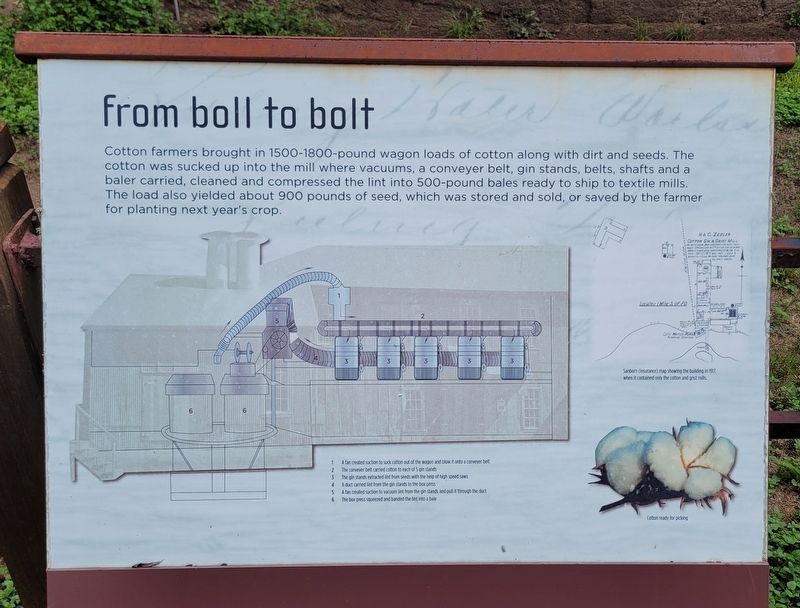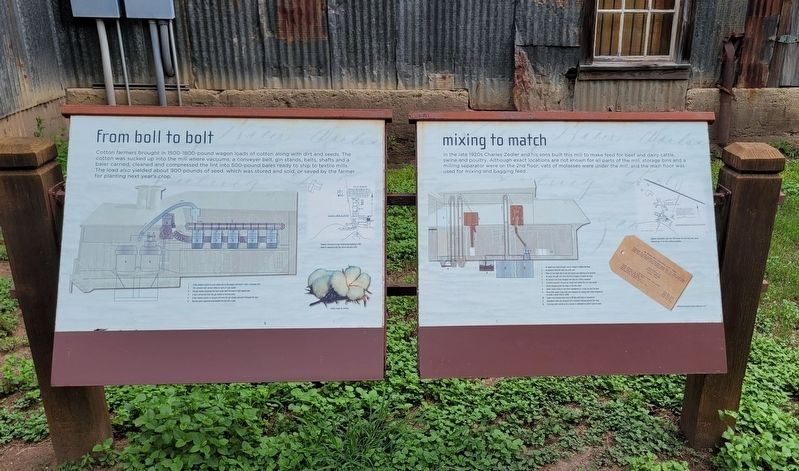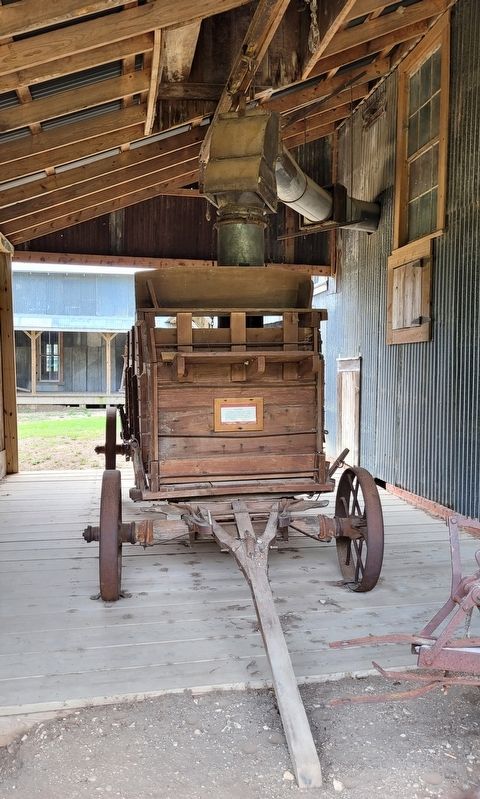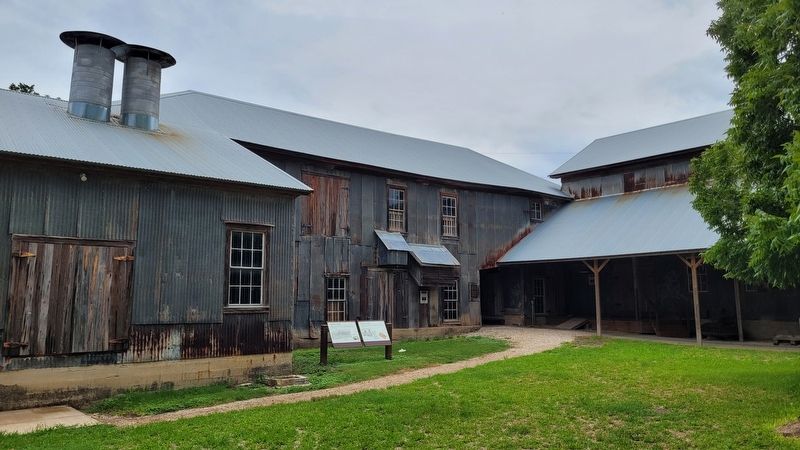Luling in Caldwell County, Texas — The American South (West South Central)
From Boll to Bolt
Captions
Lower Middle :
1. A fan created suction to suck cotton out of the wagon and blow it onto a conveyer belt.
2. The conveyer belt carried cotton to each of 5 gin stands.
3. The gin stands extracted lint from seeds with the help of high speed saws.
4. A duct carried lint from the gin stands to the box press.
5. A fan created suction to vacuum lint from the gin stands and pull it through the duct.
6. The box press squeezed and banded the lint into a bale.
Middle Right: Sanborn (insurance) map showing the building in 1917, when it contained only the cotton and grist mills.
Lower Right: Cotton ready for picking.
Erected by Zedler Mill Museum & Park.
Topics. This historical marker is listed in these topic lists: Agriculture • Industry & Commerce. A significant historical year for this entry is 1917.
Location. 29° 40.03′ N, 97° 39.084′ W. Marker is in Luling, Texas, in Caldwell County. Marker is at the intersection of South Laurel Avenue and South Magnolia Street (State Highway 80), on the right when traveling south on South Laurel Avenue. The marker is located in the central section of the Historic Zedler Mill Museum and Park. Touch for map. Marker is at or near this postal address: 1170 South Laurel Avenue, Luling TX 78648, United States of America. Touch for directions.
Other nearby markers. At least 8 other markers are within walking distance of this marker. Mixing to Match (here, next to this marker); Why Here? Why Then? (a few steps from this marker); The Lifeblood of Luling (a few steps from this marker); Fading Away and Coming Back (a few steps from this marker); Going with the Grain (a few steps from this marker); Responding to a Looming Need (a few steps from this marker); Zedler's Mills (within shouting distance of this marker); Using Your 'Head' (within shouting distance of this marker). Touch for a list and map of all markers in Luling.
More about this marker. The Zedler Mill Park and its parking are free to the public daily. Donations are appreciated when visiting the Zedler Mill Museum.
Also see . . .
1. Zedler Mill Museum & Park
. The City of Luling, Texas
In 1885, Bob Innes, John Orchard, J.K. Walker, and a German immigrant mill expert named Fritz Zedler, purchased the site and mill equipment naming it the "Luling Water Power Company". Soon they added a lumber sawmill and Fritz Zedler replaced the existing stone dam with a wooden dam and penstock that could generate more power. Buying out his three partners within a few years, Fritz Zedler became sole owner in 1888 and invited his oldest son, Berthold, to be his partner. Not long after the acquisition, the entire three story facility caught fire in October 1888 and was totally destroyed. The citizens of Luling promised to hold the sale of their cotton crops for the Zedlers to rebuild. Devastated, but not giving up, the Zedler family rebuilt the mill factory and within seven weeks, it was operational.(Submitted on August 27, 2022, by James Hulse of Medina, Texas.)
2. Cotton gin. Wikipedia
A cotton gin—meaning "cotton engine"—is a machine that quickly and easily separates cotton fibers from their seeds, enabling much greater productivity than manual cotton separation. The fibers are then processed into various cotton goods such as calico, while any undamaged cotton is used largely for textiles like clothing. The separated seeds may be used to grow more cotton or to produce cottonseed oil.(Submitted on August 27, 2022, by James Hulse of Medina, Texas.)
Credits. This page was last revised on August 27, 2022. It was originally submitted on August 25, 2022, by James Hulse of Medina, Texas. This page has been viewed 88 times since then and 10 times this year. Photos: 1, 2, 3, 4. submitted on August 27, 2022, by James Hulse of Medina, Texas.



